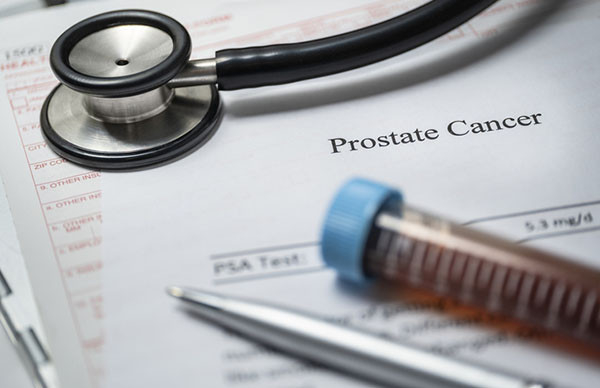
It used to be that doctors would automatically recommend treating all men with prostate cancer, even if their initial biopsies suggested the disease would grow slowly (or at all). But during the last several decades, the pendulum on treatment has swung the other way.
Doctors are now likely to advise active surveillance for low- to intermediate-risk cancers that may never turn deadly over the course of a man’s life. Active surveillance involves routine PSA checks, follow-up biopsies, and more recently, magnetic resonance imaging of a patient’s tumor. Treatment is initiated only when — or if — the disease shows signs of progression.
Recent evidence from Johns Hopkins University shows that the long-term risks of metastasis and death from low-grade prostate cancer among men on active surveillance averages just 0.1%. But doctors who care for such men also face a nagging question: which of their patients might have more aggressive cancer that should require closer monitoring? New findings published by the Johns Hopkins team in January provide useful insights.
The researchers’ approach
The researchers in this case zeroed in on the prognostic value of so-called perineural invasion, or PNI, on tumor biopsy samples. PNI simply means that cancer cells are moving into the perineural space between nerves in the prostate and their surrounding tissues. A finding of PNI raises red flags because the perineural space “provides a conduit by which tumor cells can potentially escape the prostate and grow elsewhere in the body,” says Dr. Christian Pavlovich, a urologic oncologist at Johns Hopkins who led the research.
Dr. Pavlovich’s team wanted to know if PNI detected on initial or follow-up biopsies would be associated with higher risks for cancer progression. So they analyzed long-term follow-up data from 1,969 men who had enrolled in an active surveillance research protocol at Johns Hopkins between 1995 and 2021. All the men were diagnosed initially with Grade Group 1 prostate cancer (the least risky form of the disease) and had undergone at least one follow-up biopsy since then.
What did the results show?
Among the 198 men with PNI, 44% of them (87 men in all) eventually progressed to Grade Group 2 prostate cancer, which is a more advanced form of the disease with an intermediate risk of further spread. Conversely, just 26% of the remaining 1,771 men without PNI (461 men) had progressed to Grade Group 2.
Pavlovich emphasizes that despite the new findings, PNI “does not make patients ineligible for active surveillance.” Importantly, the research showed that PNI was not associated with high-risk features, such as cancer in the lymph nodes of patients who wound up having surgery, or post-surgical elevations in PSA that show cancer still lurks in the body.
“What we’ve really shown here is that PNI puts men at a slightly higher risk of extraprostatic extension (cancer cells located just beyond the confines of the prostate),” Pavlovich says. “This is not necessarily a new finding. But PNI only occurs in about 10% of Grade Group 1 patients, and this is the boldest statement yet from the largest study conducted so far.” Pavlovich and his colleagues concluded that PNI provides an inexpensive and readily available indicator for identifying which men on active surveillance will benefit from more intensive monitoring protocols, including MRI and genetic tests.
Dr. Marc B. Garnick, the Gorman Brothers Professor of Medicine at Harvard Medical School and Beth Israel Deaconess Medical Center, agrees, while pointing out that PNI evaluations aren’t performed often enough. A PNI analysis of pathology specimens, he says, “along with emerging and sophisticated genetic testing of the tissue samples, may lead to more certainty in our recommendations to patients.”
About the Author

Charlie Schmidt, Editor, Harvard Medical School Annual Report on Prostate Diseases
Charlie Schmidt is an award-winning freelance science writer based in Portland, Maine. In addition to writing for Harvard Health Publishing, Charlie has written for Science magazine, the Journal of the National Cancer Institute, Environmental Health Perspectives, … See Full Bio View all posts by Charlie Schmidt
About the Reviewer

Marc B. Garnick, MD, Editor in Chief, Harvard Medical School Annual Report on Prostate Diseases; Editorial Advisory Board Member, Harvard Health Publishing
Dr. Marc B. Garnick is an internationally renowned expert in medical oncology and urologic cancer. A clinical professor of medicine at Harvard Medical School, he also maintains an active clinical practice at Beth Israel Deaconess Medical … See Full Bio View all posts by Marc B. Garnick, MD







